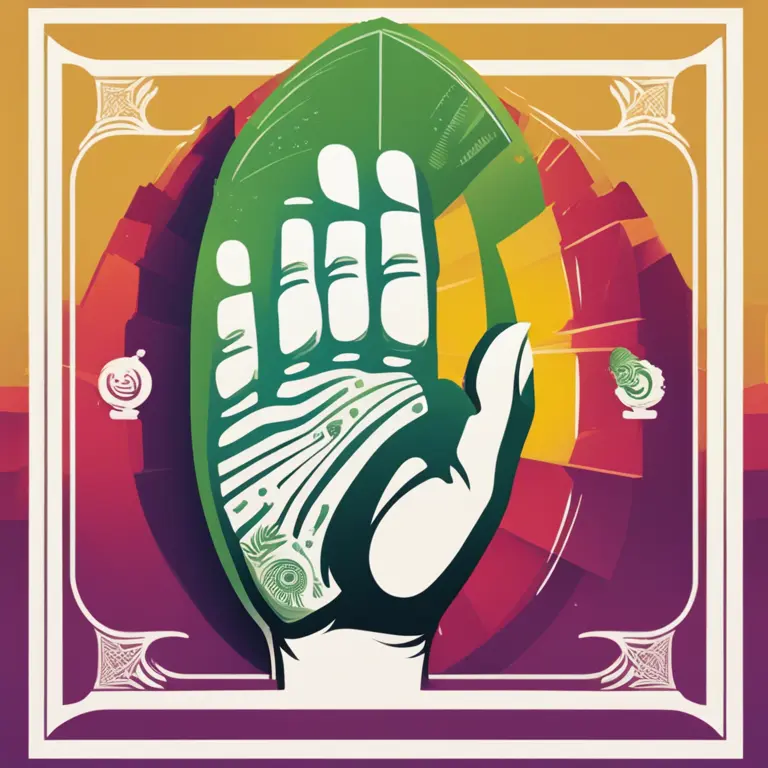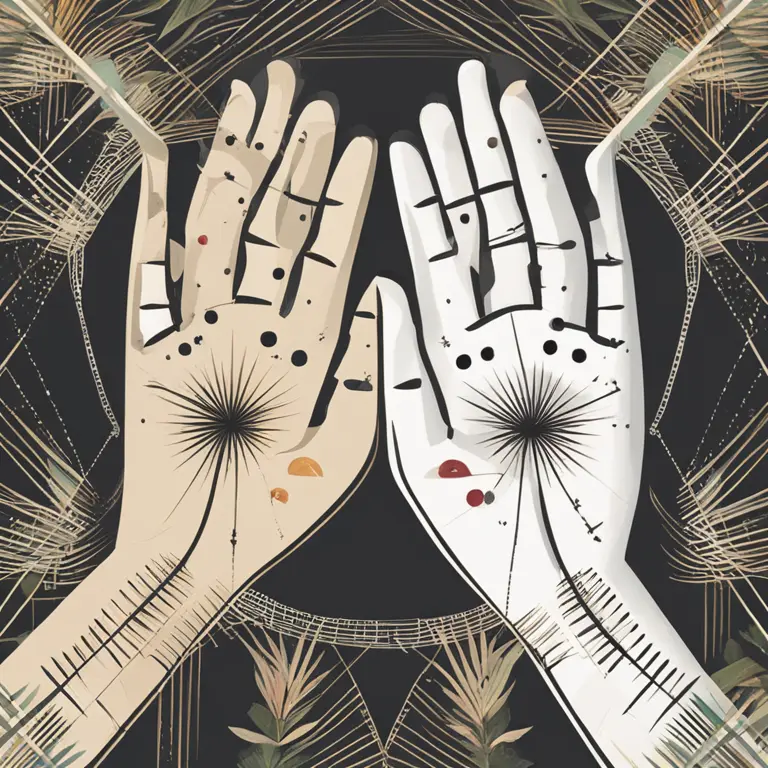
Palmistry's Position in Modern Science
Palmistry's relationship with science, its historical intrigue, and contemporary views are dissected in this insightful article.
article by Nora Pennington
The Genesis of Palmistry
Palmistry, the art of analyzing one's palm to foretell the future and dissect character traits, has been practiced for millennia. From ancient India, China, and Egypt to Greek and Roman civilizations, palm reading has decidedly woven its way through cultural tapestries. Historical accounts of palmistry often attribute mystical significance to its practice, yet the quest to understand its relation to science has been equally persistent. In this examination, we delve into traditional palmistry and its intersection—or lack thereof—with scientific principles.

Scientific Skepticism and Palmistry
In modern science, where empirical evidence and replicable experiments are the backbone of credibility, palmistry has found itself under scrutiny. The scientific community generally classifies palmistry within pseudoscience, as its practices lack the methodological rigor and falsifiability that science demands. Despite anecdotal examples of accurate readings, palmistry is yet to present a systematic approach that withstands the scrutiny of randomized, controlled experimentation.

Palmistry in the Psychological Realm
Palmistry, however, isn't utterly devoid of intriguing overlaps with science. For instance, studies in psychology have occasionally flirted with elements analogous to those used in palmistry, such as the correlation between certain hand features and personality traits. What remains clear is that while palmistry doesn’t align strictly with scientific methods, it sometimes interweaves with psychological narratives, albeit in a way that is usually more exploratory than explanatory.

Biometric Analysis and Hand Patterns
The advent of technology has brought about a new dimension to the conversation. Biometrics has introduced a scientific basis for analyzing hand patterns, as fingerprints and hand geometry have become trusted in security and identification processes. This integration has inadvertently nuded palmistry closer to scientific territories, prompting some to ponder if and where more profound intersections may lie.
Cultural Resilience of Palmistry
Despite the lack of scientific substantiation, the cultural and entertainment value of palmistry remains substantial. As a tradition providing introspection and reflection, many individuals partake in palm readings with an understanding of its speculative nature. Therefore, while palmistry does not meet the requisites of a science, its resilience across cultures speaks to a different kind of human fascination—one not constrained to empirical validation.
Future Approaches to Palmistry
As we forge ahead, the dialogue between palmistry and science continues, with enthusiasts seeking novel ways to inject more scientifically palatable concepts into the practice. What remains is an open field where innovative thinking could potentially bring about fresh approaches, ensuring palmistry's adaptability and endurance well into the future.
Published: 2/1/2024
Modified: 2/1/2024
More predictions
Come back here soon to learn more about yourself and your future


An Introduction to Palmistry: Insights from Your Hands
Discover the art of palm reading and how the lines and shapes of your hands can reveal personal insights and future possibilities.


The Palm's Path to Prosperity: Interpreting the Success Line
Uncover the mysteries of the palmistry success line and learn how it may influence your journey towards achieving your goals and aspirations.


The Art of Palmistry: A Beginner's Guide
Delve into the basics of palmistry and learn how the lines on your hands can reveal insights about your life and personality in this concise guide.